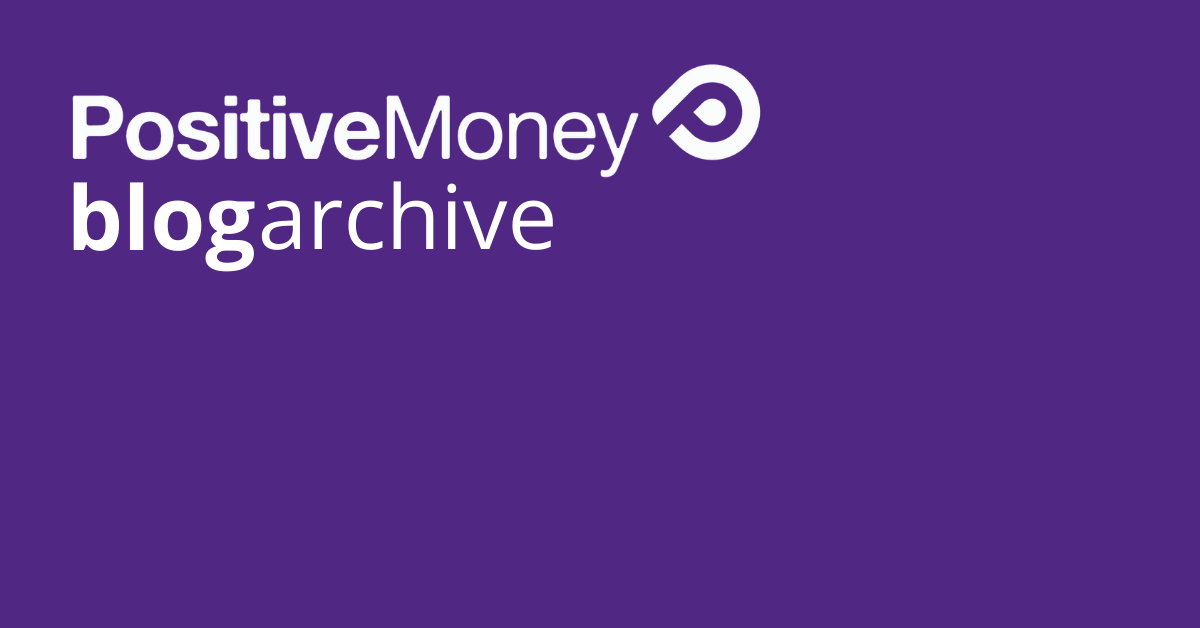The Money Goes Around and Around

Guest Post by Ken MacIntyre
Explaining the financial system
“I blow thru here
The music goes down and around
Whoa-ho-ho ho-ho ho
And it comes out here”
The Music Goes Around, popular song from 1936
I was reminded of this inane novelty song when reading NEF’s description of Quantitative Easing in its latest report on banking (Featherbedding financial services, Feb 2011).
Over 2009¬-10 the Bank of England bought £200bn of mainly government bonds (IOUs) from banks in exchange for newly issued cash and effectively financed the entire borrowing requirement for that year. But it was not that simple. Firstly, the Treasury issued £200bn of bonds to the banks in exchange for cash. Then the Bank of England bought these bonds back from the banks and in exchange issued new money which forms part of the banks’ reserves held by the Bank of England.
Net result: no new debt issued by the Government but the banks now have cash reserves which they can if they wish use to buy more government bonds or borrow from the Bank of England at 0.5% and buy government bonds yielding 3%. This is in financial jargon, arbitrage, in plain language, a risk free profit for the banks, in this case at taxpayers’ expense.
Still following? Let’s look at the taxpayer ‘bail out’ of the banks which has added the equivalent of a year’s output to the national debt. The assistance to the banking sector has been estimated at £1.2 trillion. This is a staggering sum. If you spent a pound a second it would take just under four months to spend a million pounds, over 300 years to spend a billion pounds, and over 300,000 years to spend a trillion.
Very little of this is actual tax revenue; most of it is borrowed by, as we have seen above, the government issuing bonds – IOUs. Where does the cash the government needs to cover its spending shortfall come from? We know that almost all money apart from the insignificant amount issued by the government as notes and coins originates in the banking system so directly or indirectly the banks are financing their own bail out. Banks who hold government debt are creditors of the government but as mendicants receiving government aid are debtors. And the government is a debtor, creditor and shareholder of the banking sector. This is completely absurd. Banks would not be allowed to create new money to pay off their debts but by this circular route, in effect that is what they are doing.
This insane money carousel is intended to deal with the shrinking of the money supply after the collapse of the global banking pyramid scheme in 2007-08 known as the ‘credit crunch’ which caused the recession and the collapse in tax revenues. The only way under our present system to get more money into circulation is by more bank lending. This is the whole object of Project Merlin and it is ‘utterly mad’ in the words of John Tomlinson, a contributor to the Banking Commission enquiry.
The government could deal with the money supply and its fiscal deficit by issuing debt free money directly into the economy. It is so simple it is almost unbelievable. Now however there is an imbecilic ‘debate’ about raising interest rates which would take even more money out of the economy. You really could not make it up. So, setting aside the complexities, how does the financial system work?
“You press the enter key
The money goes around and around
Whoa ho- ho ho- ho ho
And it comes out here”
That’s all you need to know.
( The Music Goes Around – YouTube (Tommy Dorsey) )